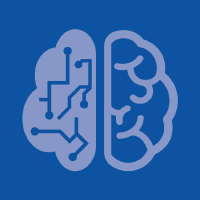Topic Menu
► Topic MenuTopic Editors


Deep Learning and Transformers’ Methods Applied to Remotely Captured Data
Topic Information
Dear Colleagues,
The areas of machine learning and deep learning have experienced impressive progress in recent years. This progress has mainly been driven by the availability of high processing performance at an affordable cost and a large quantity of data. Most state-of-the-art techniques today are based on deep neural networks or the more recently proposed transformers. This progress has sparked innovations in technologies, algorithms, and approaches and led to results that were unachievable until recently. Among the various research areas that have been significantly impacted by this progress is the processing of remotely captured data such as airborne and spaceborne passive and active imagery, underwater imagery, mobile mapping data, etc. This Topic aims to gather cutting-edge contributions from researchers using deep learning and transformers for remote sensing and for processing remotely captured data. Contributions are accepted in different areas of application, including but not limited to environmental studies, precision agriculture, forestry, disaster response, building information modeling, infrastructure inspection, defense and security, benchmarking, and open-access datasets for remote sensing. Studies using active or passive sensors from satellites, airborne platforms, drones, and underwater and terrestrial vehicles are welcome. Contributions can be submitted in various forms, such as research papers, review papers, datasets, and comparative analyses.
Prof. Dr. Moulay A. Akhloufi
Dr. Mozhdeh Shahbazi
Topic Editors
Keywords
- multispectral, hyperspectral remote sensing, photogrammetry
- LiDAR, UAV, sensors
- underwater drones
- mobile robots
- forest monitoring, forest fires, precision agriculture, environmental monitoring, natural risks
- defense and security
- machine learning, deep learning, data fusion, image processing
- space sensing and exploration
- remote sensing datasets
- navigation
- 3-D mapping and modelling
Participating Journals
| Journal Name | Impact Factor | CiteScore | Launched Year | First Decision (median) | APC |
|---|---|---|---|---|---|

AI
|
- | - | 2020 | 20.8 Days | CHF 1600 |

Applied Sciences
|
2.7 | 4.5 | 2011 | 16.9 Days | CHF 2400 |

Big Data and Cognitive Computing
|
3.7 | 4.9 | 2017 | 18.2 Days | CHF 1800 |

Remote Sensing
|
5.0 | 7.9 | 2009 | 23 Days | CHF 2700 |

Sensors
|
3.9 | 6.8 | 2001 | 17 Days | CHF 2600 |

MDPI Topics is cooperating with Preprints.org and has built a direct connection between MDPI journals and Preprints.org. Authors are encouraged to enjoy the benefits by posting a preprint at Preprints.org prior to publication:
- Immediately share your ideas ahead of publication and establish your research priority;
- Protect your idea from being stolen with this time-stamped preprint article;
- Enhance the exposure and impact of your research;
- Receive feedback from your peers in advance;
- Have it indexed in Web of Science (Preprint Citation Index), Google Scholar, Crossref, SHARE, PrePubMed, Scilit and Europe PMC.

